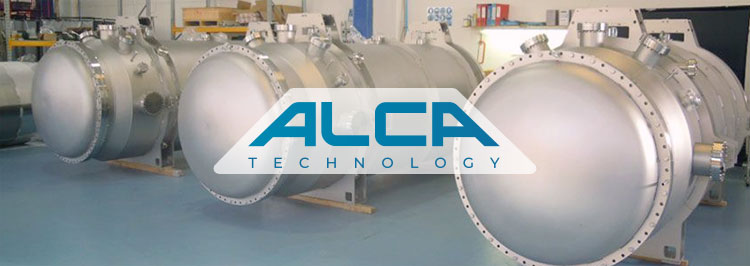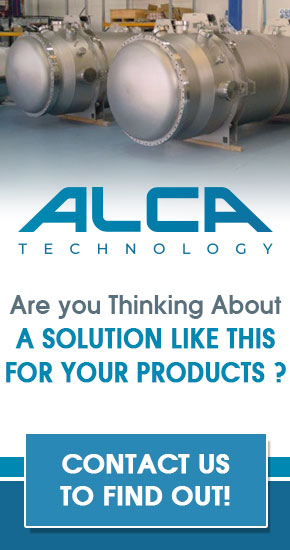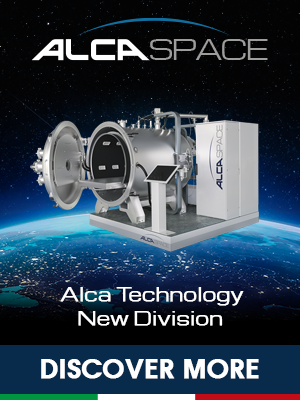Vacuum Deposition Technologies

“Vacuum deposition technologies” is a definition encompassing a wide set of processes which are used by industry to deposit thin films, with a wide range of compositions and purposes, over substrate with largely variable composition, taking advantage of a high-vacuum environment.
Generally speaking, the vacuum deposition process of thin films involves three protagonists, which are: the source, the transport process and the substrate. The properties of the thin film produced depend on many parameters, like the deposition temperature, the nature of the substrate, the residual gas composition in the vacuum chamber, the rate of deposition, etc. This is a complex topic, which will be covered elsewhere, and which is backed by a wide literature.
As an example, one of the simplest, and older vacuum deposition processes is called vacuum evaporation, and it is a physical vapor deposition process that changes material at the source from a solid state into vapor before it gets to the substrate where it is condensed back into solid state and deposits as thin films.
In more general terms, the deposition process can be supported by physical transformations, - in which case it is said to belong to PVD (Phisical Vapour Deposition) family - or by chemical transformations - which let us to classify it as belonging to the CVD (Chemical Vapour Deposition) family-.
Physical Vapour Deposition (PVD)
The PVD family comprises a large set of different technologies. A brief description of the more common follows.
Thermal Evaporation
In this process, the material which is always in either liquid or solid state evaporates in the presence of heat and then condenses on the substrate as thin films. The substrate is at a lower temperature than the source.
Magnetron Sputtering
This is one of the most common physical deposition method for producing thin films. In magnetron sputtering, the material to be deposited is always in solid form and represent the cathode of a plasma generating device called magnetron (an in-depth description of this device will be described elsewhere), where it takes the name of target. Basically, the target is sublimated due to the action of ions which bombards its surface, thus allowing for evaporation of the material to be deposited without the presence of a molten phase. The advantages of sputtering include: the high purity of the thin films which can be deposited, the thin film consistency and homogeneity, the wide range of material which can be deposited, the excellent adhesion to the surface of the substrate, etc.
One of the main disadvantages is the high cost of the machine and the slow rate of thin film deposition.
Pulsed Laser Ablation
Pulsed laser deposition (PLD) involves the use of laser beam targeted upon the material to be evaporated, which is held in the vacuum chamber. The energy of the laser beam is so high that it causes the target material to evaporate across the vacuum chamber and then stick to the substrate thereby producing a thin film. The ability to form films with very high purityis one of the advantages of pulsed laser deposition.
Cathodic Arc Deposition
Cathodic Arc deposition is a type of physical vapor deposition method that involves the use of an electric arc (high current, low voltage) to evaporate the material to be deposited. The arc temperature is so high that any material can be vaporized at a reasonably high rate, thus overcoming one of the limitations of the previously cited technologies. The vapor then condenses and deposit on the substrate as thin films. This method can be used to produce metals, ceramics, and composite films. One of the disadvantages of arc vapor deposition is the low microstructural quality of the thin film which can be obtained, and the presence of local defects.
Application of physical vapor deposition
Physical vapor deposition techniques are used in many fields, like the manufacture of semiconductor devices, cutting tools, decorative coatings, aerospace industry and biomedical field.
Chemical vapor deposition (CVD)
In chemical vapor deposition, the substrates are exposed to volatile gases in the vacuum chamber which then react or decompose on the substrate in the form of a thin film. In other words, CVD is the transformation of gaseous molecules (precursors) into a solid thin film when they chemically react, while coming in contact with the substrate surface. It has to be noted that CVD technologies exists which don’t require a vacuum environment to be carried out: in this sense, the CVD technologies can be considered more versatile than the PVD counterparts.
Microwave plasma-assisted CVD
The surface reaction is assisted by the presence of a plasma which is generated using a microwave source, and an ionizable buffer gas. There are two main variants of this process:
- Plasma-Enhanced CVD (PECVD), i.e. CVD that utilizes plasma to enhance chemical reaction rates of the precursors. PECVD processing allows deposition at lower temperatures, which is often critical in the manufacture of semiconductors. The lower temperatures also allow for the deposition of organic coatings, such as plasma polymers, that have been used for nanoparticle surface functionalization.
- Remote plasma-enhanced CVD (RPECVD), which is similar to PECVD except that the substrate surface is not directly in the plasma discharge region. Removing the substrate surface from the plasma region allows processing temperatures down to room temperature.
Atomic-layer CVD (ALCVD)
Deposits successive layers of different substances to produce layered, crystalline films. It is called also Atomic layer epitaxy.
Metalorganic chemical vapor deposition (MOCVD)
This CVD process is based on the decomposition of metalorganic precursors.
Photo-initiated CVD (PICVD)
This process uses UV light to stimulate chemical reactions. It is similar to plasma processing, given that plasmas are strong emitters of UV radiation.
Laser Chemical vapor deposition (LCVD)
This CVD process uses lasers to heat spots or lines on a substrate in semiconductor applications. In MEMS and in fiber production the lasers are used rapidly to break down the precursor gas-process temperature can exceed 2000 °C to build up a solid structure in much the same way as laser sintering based 3-D printers build up solids from powders.
Applications chemical vapor deposition (CVD)
The use of CVD includes semiconductors manufacturing, optical coatings deposition, hard coatings deposition, etc.
A larger selection of deposition methods, is summarized in the table below. The vacuum-based deposition techniques have been highlighted.
Physical deposition
- Evaporation techniques
a. Vacuum thermal evaporation
b. Electron beam evaporation
c. Laser beam evaporation
d. Arc evaporation
e. Molecular beam epitaxy
f. Ion plating evaporation
- Sputtering techniques
a. Direct current sputtering
b. Radio frequency sputtering
Chemical deposition
- Sol-gel technique
- Chemical bath deposition
- Spray pyrolysis
- Plating
a. Electroplating deposition
b. Electroless deposition - Chemical vapour deposition (CVD)
a. Low pressure CVD
b. Plasma enhanced CVD
c. Atomic layer deposition (ALD)
Summary of vacuum deposition methods
In conclusion, Vacuum deposition is the process of deposit thin films in a vacuum. The choice of the proper deposition method (PVD, CVD, and the actual deposition technology) depends on many parameters, some of which are the: the function of the desired film, its thickness, purity, microstructure, and also the requested deposition rate.


